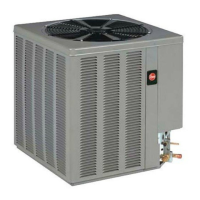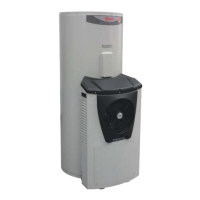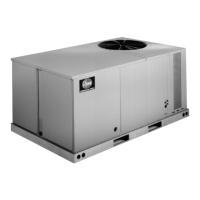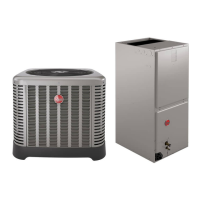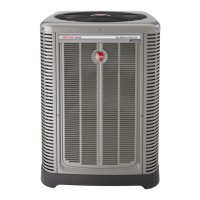54
This document is stored and maintained electronically by Service. All printed copies are deemed uncontrolled.
TM077: 325 & 410 Series II Heat Pump Service Instructions
Rev 00: Issued April 2014
Component Tests 18 and 19
Mark and disconnect the compressor
wiring at the compressor. Using a
multimeter set on the resistance (ohms)
scale, measure between the compressor
terminals. The following run and start
winding results should be obtained:
Red & blue terminals (Run): 4.18Ω
Red & black terminals (Start): 5.76Ω
Unplug the compressor from the controller
and using a multimeter set on the
capacitance (µF) scale, measure between
the two front pins of the jack on the
controller.
Normal capacitance is 25 micro Farads
(25µF).
Refrigerant Charge
Indication of Correct Refrigerant Charge
Clear liquid should be observed through the receiver / filter dryer sight glass. A few small
bubbles might be visible during the initial start up of the system or when the TX valve
adjusts quickly, however clear liquid should return shortly after. The compressor current
draw and system pressures should be within the normal range and operating temperatures
should be consistent with system pressures.
Indication of Shortage of Refrigerant
Bubbles will persist in the sight glass for a significant amount of time, or repeat often. The
system pressures will be low and the compressor current draw will be low. The evaporator
coil and suction line will feel relatively warm, and there may be a hissing noise at the TX
valve. Note: Unusual current draw or low suction pressure can be a sign of other
problems, such as a system blockage, malfunctioning TX valve or restricted evaporator air
flow.
Indication of Overcharge of Refrigerant
The discharge pressure will be high and the compressor current draw will be high. The
compressor may be unusually noisy and in extreme cases may trip its internal overload
switch. Note: Unusual current draw or high head pressure can be a sign of other problems
such as a system blockage, malfunctioning TX valve or restricted condenser water flow.

